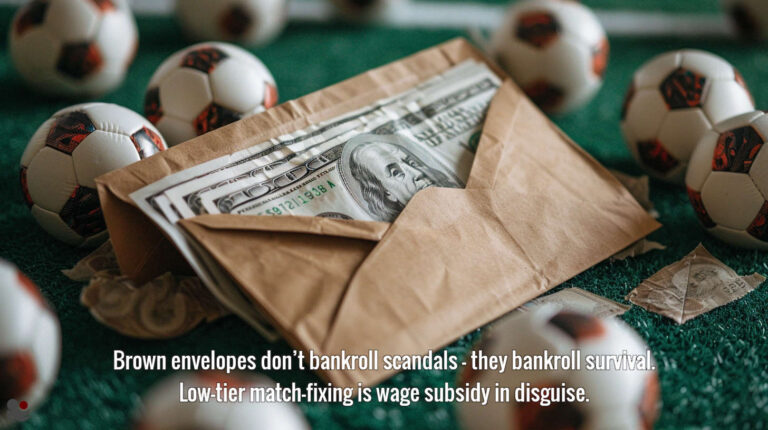
In conjunction with our regular match previews published in the German Betfair blog we are pleased to present our league match with head-to-head history ‘Value’ bet detector spreadsheet.

with H2H History
WITH Asian Handicap
(ex VAT; see below)

WITHOUT Asian Handicap
(ex VAT; see below)

0% VAT to UK customers
0% VAT to Non-EU customers
Read more: EU VAT Legislation
e-shop: Product Overview
View Your Shopping Cart
Our bet selections are always based on true odds calculations identifying mathematical ‘value’ in the markets. Of course, not every bet can win, but ‘value’ betting is the only reliable method of ensuring long-term betting profits.
‘VALUE’ bet detector: The Excel spreadsheet calculates the ‘true’ odds (= expected probabilities based on historical statistics) and then displays each ‘value’ bet recommendation. For every event included the expected values are calculated, compared to market prices, and finally the statistical probability of winning the bet is shown.
Soccerwidow follows the philosophy that only through identifying bets containing mathematical ‘value’ in the prices offered by bookmakers or exchanges is it possible to make consistent profits.
It should be noted that the spreadsheet is not a tool for automated betting. The tables provide vital information to improve the accuracy of your own predictions, and the figures do not substitute for reading salient news and applying good judgement.
The Excel spreadsheet offered for sale comes pre-filled with data from the Premier League game Liverpool v. Manchester City on 26/8/2012. Just delete or over-type this to analyse any match of your choosing.
Read a few sample match previews which apply ‘League Games with H2H History’ calculations:
- 26.8.2012 English Premier League: Liverpool v. Manchester City – Statistical Match Analysis & Football Betting Predictions
- 6.8.2012 Norwegian Tippeligaen: Stabæk v. SK Brann – Statistical Match Analysis & Football Betting Predictions
- 5.8.2012 Belgian Jupiler League: Zulte-Waregem v. Gent – Statistical Match Analysis & Football Betting Predictions
Notes: Adjust the picture quality at the bottom of the screen above by clicking on the ⚙ button (to the left of the YouTube logo), then click on ‘Quality’ and choose a higher resolution as desired. Go to full screen mode by clicking on the box symbol (to the right of the YouTube logo).
Supporting Videos
Data Sourcing: Learn where to find historical match data and download it from www.football-data.co.uk to make your own Excel store of statistics.
Data Input: Historical match results and head-to-head data input to populate the Value Bet Detector ready for input of the best odds you can find.
Frequently asked questions:
Can I use the spreadsheet in other leagues?
Yes, the calculations apply for any league in the world. The only parameters are that the game in question must be between two teams which have played at least their last 25 home or away games in the same league. The calculations are based on the home team’s last 25 home games and the away team’s last 25 away games, in the same league. Also, both teams must have played the corresponding fixture at least 6 times in the last 10 years (in other words, the home team has hosted the away team at least 6 times in all competitions (not friendlies) in the last 10 years).
How long does it take to enter historical data into the spreadsheet?
This is a manual procedure and you will quickly find which sources are best for the full-time and half-time results of both teams in the 25 matches to be analysed, plus the head-to-head encounters. We recommend Football-Data, Betexplorer, Oddsportal and Soccerway, although there are a host of other sites specialising in historical statistics.
At the start, you will find data collection will take about 30 minutes per match including entering the best bookmaker odds you can find (try Betfair and Oddschecker).
Are the formulas for the spreadsheet calculations visible?
Yes, we have hidden none of the formulas.
Exactly which historical records do I have to input?
The full-time and half-time scores for both team’s last 25 matches (home games only for the home team, away games only for the away team), plus the same for the head-to-head encounters over the last 10 years.
What knowledge is required?
You should already have a understanding of odds and how they are calculated. The spreadsheet is just a tool to identify potential bet candidates. You will need to understand what is meant by the term ‘value’ and also have a good idea how to spread risk with a well-structured betting portfolio. The spreadsheet is intermediate level, and you should be become entirely familiar with its mechanics before committing money to any bet recommendations suggested by the spreadsheet.











Hi Soccerwidow, I’ve been using this calculator for a while, so far has been a hit and miss; the biggest issue I had it’s the variance, from month to month even choosing the same kind of bets and probability clusters (flat stake mostly asian handicap and over/unders with 65-75%) the results differ a lot. The earnings from a good period are lost in the following month and so on, after nearly 400 bets it’s hard to break even.
Maybe I’m missing something or using an older version of this spreadsheet, but sometimes I feel this is pure luck. Also I think when it comes to bigger leagues as EPL, La Liga, Serie A it’s very difficult to have an edge against the bookies, they have too many sources and information, they won’t commit mistakes that easily in those markets; for example it doesn’t matter if an underdog it’s “value” priced generally they know very well in advance why they’re publishing those odds. Perhaps the biggest amount of money in these leagues and some others mostly comes from arbitrage betting and it could explain the irrational odds movements pre match, that’s a theory a I have.
Finally, I’d like to discuss when you say that this is only a numeric tool (which I agree) but then you add to “pick the bets you feel are right for you”; in my opinion picking the bets you consider the winners without any numeric calculation, it’s basically betting by gut feeling. For example it doesn’t matter if this spreadsheet tells me that Parma +1.5 (1.82 in Pinnacle) has 70% probability against Napoli if I’m certain that Napoli it’s going to trash Parma which is having a terrible season by 2, 3 or even more goals? what I should trust in that case, the numbers or my perception?
I would like to read your answer.
P.D: By the way, Parma lost 2-0; according to the calculator Napoli -1.5 had 30% of probability and was priced 2.14 in Pinnacle right before the game, I lost many bets like this.
Hi Jozef,
Thanks for taking the time and trouble to comment.
Having analysed over 750 matches with the Value Calculator in various worldwide leagues, we find the algorithms accurate to within +/-5% on most bet types, with others performing even better.
When we get to 1,000 matches analysed we shall publish the results and this in turn may lead to one or two of the algorithms being tweaked. It may even lead to individual calculators for certain leagues, but 100 spreadsheets is probably too few to be able to make firm judgments. 100 games in the Bundesliga does not even represent a third of a whole season – the more stats you have, the more reliable information extracted from them becomes.
Please don’t get caught in thinking that the calculator is an automated bet picking tool. All it does is give you numerical information regarding the probabilities of outcomes occurring and whether or not they contain value.
Once you have this information to hand, it is then necessary to pick the bets you feel are right for you. You might want to place bets only on outcomes where the calculator has indicated a 75% probability of success, or higher.
Concentrate on the probabilities and then look to see if the bet carries value. Even if the value is negative, in the long run you may still turn a profit backing 75% chances.
If you are going to work on specific algorithms for the Bundesliga then it would be great to hear from you again with any findings you may discover. We can then trawl through our data and confirm whether or not you are on the right track.
Hope this helps and thanks again for your interest in Soccerwidow.
Hi Soccerwidow,
i’ve tried the spreadsheet and I´ve got interesting results. In some leagues are the odds very similar to odds of bookmakers, but in some ligue f.e. germany bundesliga is your algoritmus for setting of “true odds” very dubious. I made backtesting in more than 100 matches, which I choose value regads your algoritmus (matches with big value),but I have to say, I would lost a lot of moeny, if I use your algoritmus.
50% weight for h2h is relly optimistic and I am sure, that bookmakers don´t give so big weight for H2h by setting the odds.
Nevermind, I like your website 🙂
Hi Soccerwidow and Soccerwidow’s Bloke :),
I want to find historical data for the Denmark League can you help me please as soon as possible. I cant find historical excel sheet data about the Denmark league anywhere.
If you could help I would really appreciate it 🙂
Thank you 🙂
Hello again Mike,
As I’ve just mentioned in my last post, we find the most relevant sample for statistical significance is 10 calendar years of competitive H2H results (no friendlies) prior to kick-off. In other words, historical games between the two teams you are analysing which took place at the ground of the home team. We also set a minimum figure of six H2H’s in that 10 year period – if the teams have played less than six H2H’s in the last 10 years then we do not analyse the game. The H2H record is the first thing we look at when deciding upon match selection.
H2H history is a great leveller. You can see the effects on the odds once you’ve inputted the historical data. Enter the two teams’ data first and then look at the main Value Calculator tab. Notice the odds and compare them with what is being offered in the market. Then fill-in the head-to-head data. Look back at the VC tab and you’ll find the effect the H2H results have.
In the Value Calculator, averages are compared with averages. Analyse three home games in a row for a particular team and you won’t see much difference in the odds and probabilities suggested because much of the same data is used for the first match back as opposed to the third match back. It’s the same for the away team. It’s the same for the H2H’s. All of this data is only used to define what an ‘average’ game (in terms of numbers) between the two teams would look like if the match played out to recent form.
H2H data also helps build a picture of how the two teams in question have played against each other in past. If the home team holds a hoodoo over the away team then this factor is built in to the values and probabilities shown in the calculator. It has a ‘smoothing effect’ and is the only data directly relevant to matches between the two teams. With data this important, why would you not include it in your calculations?
Don’t forget, the Value Calculator is a tool to give you the numbers in advance of a situation. You cannot influence the match outcome, but looking back at the past in order to interpret what may happen in the future is the only way of setting odds. This is the way bookmakers operate, so in order to compete, you must join them.
Mike, I hope this helps!
Hi again Socrates,
We find the spreadsheet accuracy over the long term very satisfactory with many of the 1×2 bet types especially, within +/-3% error rate. That said, we have had to fill-in over 700 spreadsheets from different leagues to gain enough data to analyse with this much confidence.
Personally speaking, we use the highest odds on the evening before kick-off and then place the bets early next morning. So long as you set yourself benchmarks for odds collection and bet placement and stick to them, you should receive pretty uniform results from the calculator.
After all, the Value Calculator looks only at past results (numbers) to predict future performance. It doesn’t take into account all the movements in team news and odds in all the historical fixtures analysed, so there is no need to let yourself become influenced by market movements prior to kick-off. The Value Calculator exists to take out the emotion from betting and turn it into a pure numbers game. Use your judgment once you have the numbers in front of you.
Because the Value Calculator uses the last 25 respective home/away results of the two teams involved, plus all competitive head-to-head results in the last 10 calendar years prior to kick-off (minimum of 6 h2H’s needed for relevance), you are always going to be slightly restricted on your match selection for analysis. But this is good, as you are only ever looking at a cluster of matches which roughly correspond with one another. You will always be comparing ‘apples with apples’ using such an approach.
Try also looking at the probability fields in the Value Calculator – backing high probability outcomes is still profitable in some leagues, even when the odds do not indicate significant value.
I hope I have touched upon “is there value when the odds are dropping”, but it is certainly an excellent point of discussion and perhaps a topic for an article in the near future.
Thanks again for your interest in Soccerwidow, Socrates.
Hi, again
How would you rate predictions based on team strength (table position) brackets or playing styles against pure h2h statistics? H2h gives a gut feeling of having little relevance when we’re talking years of separation. Do you have any indication of where one should draw the line on h2h back history?
Hi SoccerWidow,
I’ve been using the spreadsheet for a couple of years now with excellent results. I am trying to fine tune the model and my main concern is which odds to use?
Should i use the highest opening odds from various top notch bookmakers or wait until the final odds a few minutes prior to game?
Arguments for the latter say that odds just before kick off reflect the true odds of the particular fixture, because the market has considered all variables and therefore this set should be used on our calculation.
Personally, i prefer using the highest opening odds from top bookmakers (bookie’s juice <3%), before market forces distort the prices and making you lose most of the value .
I wonder your thoughts on this ….
I would greatly appreciate an article on "Is there value when the odds are dropping?"
Hi again TBBT,
To be absolutely clear – Backing is what you do when you play against the bookmaker.
I have had a look at Tempobet’s site and they are no different from any other bookmaker. Every bet you make here is a back bet, but please read the “Alternatives to Lay Betting” article linked in my previous post to you. You will see the back bets with bookmakers which are effectively lay bets (i.e. betting against an outcome). For example, Tempobet allows you to make 1X, 12, or X2 bets. This is the double chance market. If you choose 1X, you are backing the match to end in a home win or a draw to win your bet. You are effectively betting against the away team to win, which is the same as placing a straight lay bet on the away team with a betting exchange.
I hope this helps! 🙂
Dear TBBT,
The indicators are formulas we have inserted into the Value Calculator (VC) based on the probabilities of winning each bet type. The formulas are based on a statistically significant data set of matches we have analysed ourselves using the VC. Therefore, past performance has been noted and used to set the benchmarks for identifying future results.
In answer to your numbered quesions:
1. Yes, if the bookmaker odds are higher than the true odds then this is a value back bet. If they are lower than true odds, then this is a value lay bet.
2. We cannot influence your betting decisions but if you bet under-value consistently then you are guaranteed to make a long term loss on your investments.
3. The VC is set up in such a way that a correction factor of at least six competitive head-to-head games must have been played between the two teams at the same venue in the preceding 10 calendar years. By competitive games we mean league and cup fixtures, no friendlies. If you have less than six H2H meetings then do not use the VC for that match.
4. The VC will indicate whether to make a bet if the value is positive and the probability is high enough. At the end of the day, the VC is purely an arithmetical tool and does not substitute for your better judgment. Use the VC to highlight potential bets and then use your own intuition to make the final set of bet selections.
Do you mean no laying only backing results where you play? Laying is effectively betting against a particular result. If you feel Dortmund are only good enough for a draw at best then you should lay them to win. If they lose or draw, your bet wins. This type of bet can only be performed at betting exchanges or in the following ways via bookmakers:
https://www.soccerwidow.com/betting-advice/alternatives-to-lay-betting/
I hope this helps and thanks again for your interest in Soccerwidow.
What I mean by no laying and no backing is, you only play against the bookmaker, I play from Tempobet if you can go to the internet site than you can see what I am talking about. Please help me 🙂